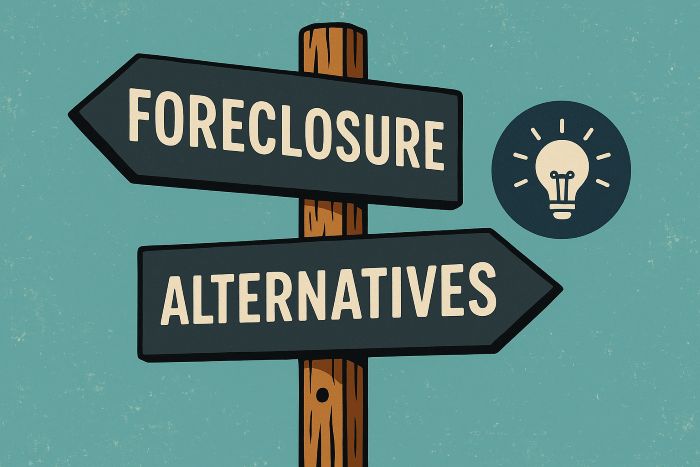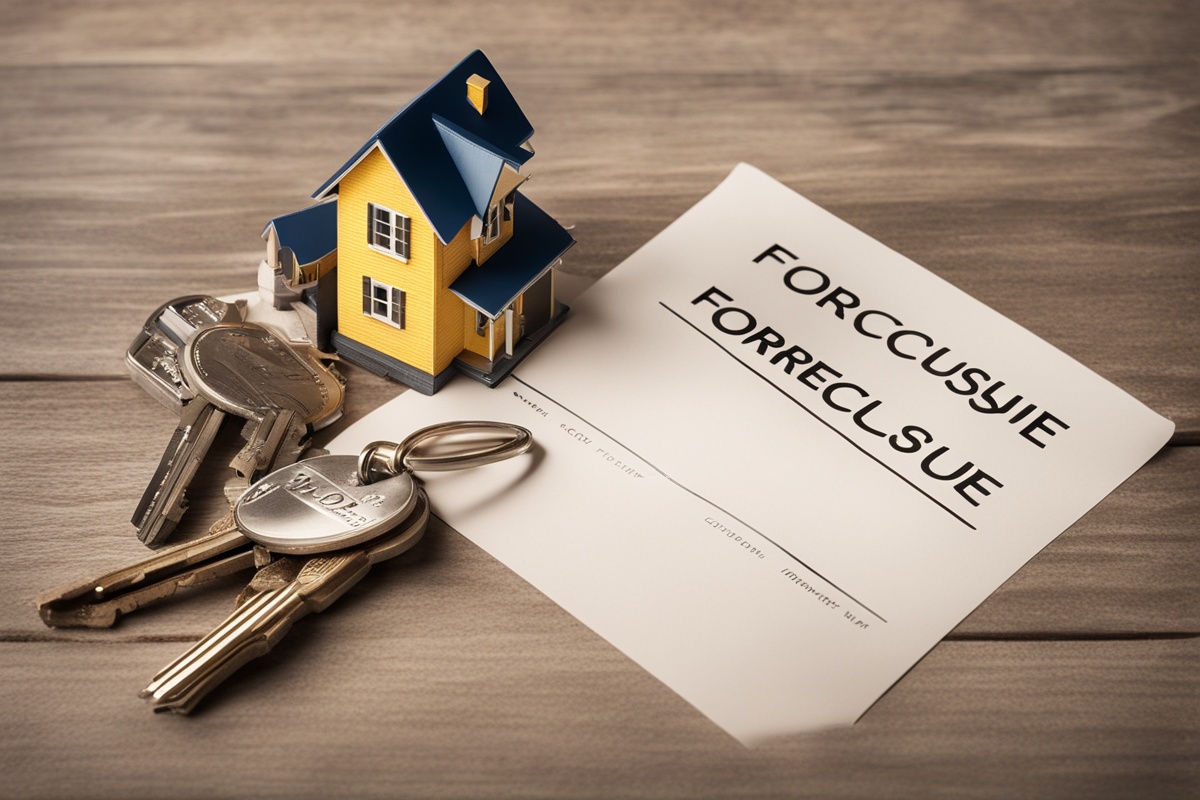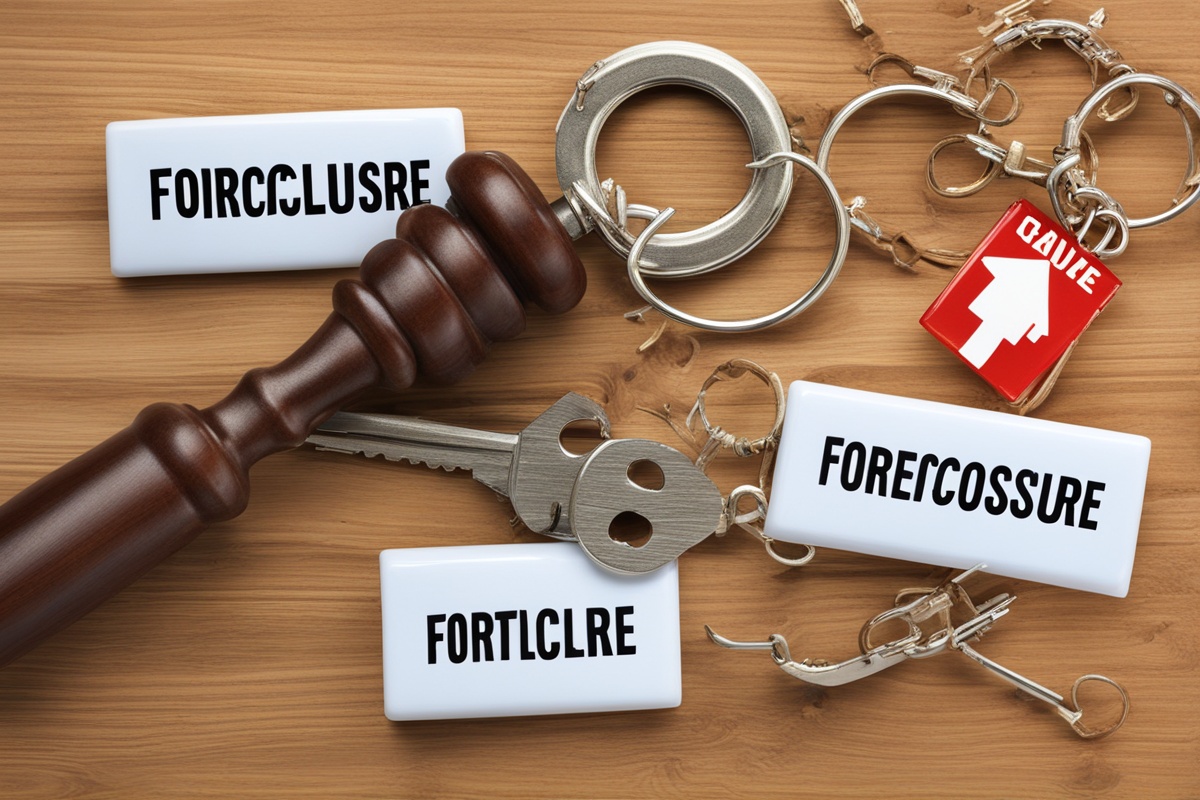Welcome to our in-depth foreclosure guide, where we’ll unpack the often daunting process of foreclosure and explore viable alternatives that could help you avoid losing your home. If you’re facing financial hardship, the threat of foreclosure can feel overwhelming. But don’t worry—you’re not alone, and there are options to consider. In this post, we’ll break down what foreclosure entails, compare it to other paths like short sales and loan modifications, and provide actionable advice to help you make informed decisions. Whether you’re a homeowner in distress or simply researching for future preparedness, this guide is designed to empower you with knowledge and practical solutions.
What Is Foreclosure? Understanding the Basics
Foreclosure is a legal process where a lender takes possession of a property due to the homeowner’s failure to make mortgage payments. It’s often the last resort for lenders, but it’s a harsh reality for many struggling with financial instability. According to the U.S. Department of Housing and Urban Development (HUD), foreclosure rates spiked during economic downturns, with millions of homes affected during the 2008 financial crisis (HUD, 2020). When payments are missed for a prolonged period—typically 90 to 120 days—the lender initiates foreclosure proceedings, which can vary by state but generally involve notices, legal filings, and eventually, the sale of the property at auction.
The impact of foreclosure is profound. Not only do you lose your home, but your credit score can drop by 200 to 300 points, making it difficult to secure loans or housing in the future (Smith, 2019). As part of this foreclosure guide, it’s crucial to understand that this process isn’t just a financial loss—it’s an emotional one too. However, knowing the timeline and your rights can give you a fighting chance to explore alternatives before it’s too late.
Key Stages of the Foreclosure Process
The foreclosure process isn’t instantaneous; it unfolds in stages, giving homeowners windows of opportunity to act. While specifics differ based on whether your state follows judicial or non-judicial foreclosure, here’s a general outline of what to expect in this foreclosure guide. Familiarizing yourself with these steps can help you identify when to seek help or pursue alternatives to avoid foreclosure.
- Missed Payments: The process often begins after 3–4 missed mortgage payments, when the lender sends a notice of default.
- Pre-Foreclosure: This is a critical period where you can negotiate with the lender or explore options like a short sale.
- Auction or Sale: If no resolution is reached, the property is sold at a public auction, often at a significant discount.
- Eviction: Post-sale, the new owner or lender can evict the original homeowner if they haven’t vacated.
Understanding these stages is vital because, as noted by real estate experts, acting early can significantly increase your chances of avoiding foreclosure (Johnson, 2021). Don’t wait until the auction notice to start looking for solutions—time is of the essence.
Alternatives to Foreclosure: Exploring Your Options
If foreclosure looms on the horizon, don’t despair. There are several foreclosure alternatives that can help you retain your home or mitigate the damage to your credit and finances. This section of our foreclosure guide dives into the most common options, each with its own benefits and drawbacks. The key is to assess your situation—your income, debt, and long-term goals—and consult with a financial advisor or housing counselor to choose the best path.
Short Sale: Selling for Less Than You Owe
A short sale occurs when you sell your home for less than the outstanding mortgage balance, with the lender’s approval to forgive the remaining debt. It’s a popular alternative in this foreclosure guide because it allows you to avoid the full impact of foreclosure on your credit—though it still results in a hit of about 100–150 points (Brown, 2022). Short sales are complex and require lender cooperation, as well as finding a buyer willing to purchase at a reduced price.
One major advantage is that you can often stay in your home during the process, and it’s less emotionally taxing than being forcibly removed through foreclosure. However, be aware that some lenders may pursue a deficiency judgment for the forgiven amount, depending on state laws. Always consult a legal expert to understand the implications in your area.
Loan Modification: Adjusting Your Mortgage Terms
Another powerful tool in avoiding foreclosure is a loan modification, where your lender agrees to alter the terms of your mortgage to make payments more manageable. This could mean lowering the interest rate, extending the loan term, or even reducing the principal balance in rare cases. According to the Federal Reserve, loan modifications have helped millions of homeowners stay in their homes since the 2008 crisis (Federal Reserve, 2021).
In this foreclosure guide, we recommend reaching out to your lender as soon as you anticipate payment issues. Many banks have hardship programs, especially post-pandemic, designed to assist borrowers. You’ll need to provide detailed financial documentation, but the effort can be worth it if it means keeping your home. Here are a few tips to navigate this process:
- Be Honest: Disclose all income and expenses to your lender to build a case for modification.
- Stay Persistent: Follow up regularly, as approval can take weeks or months.
- Seek Help: HUD-approved housing counselors can guide you through the application process for free.
- Understand Terms: Read the new agreement carefully to ensure the modified payments are sustainable.
Deed in Lieu of Foreclosure: A Last Resort Agreement
If neither a short sale nor a loan modification is viable, a deed in lieu of foreclosure might be an option. This involves voluntarily transferring ownership of your property to the lender to satisfy the debt, avoiding the formal foreclosure process. It’s less damaging to your credit than a full foreclosure—typically a 100–125 point drop—and can be quicker, reducing stress (Taylor, 2020).
However, not all lenders accept this arrangement, and it often requires you to vacate the property. As part of this comprehensive foreclosure guide, we advise using this as a last resort after exhausting other alternatives. Additionally, ensure you get written confirmation that the lender won’t pursue a deficiency judgment for any remaining balance after the transfer.
Practical Tips for Navigating Financial Distress
Whether you’re facing foreclosure or exploring alternatives, taking proactive steps can make a world of difference. Financial distress is challenging, but with the right approach, you can regain control. This section of our foreclosure guide offers practical, actionable advice to help you weather the storm and protect your future. Remember, the earlier you act, the more options you’ll have to avoid foreclosure.
First, communicate openly with your lender. Many homeowners avoid this out of embarrassment, but lenders often prefer to work out a solution rather than foreclose, as it’s costly for them too. Second, consider cutting non-essential expenses to free up funds for mortgage payments while you explore long-term solutions. Finally, don’t hesitate to seek professional help—whether it’s a financial advisor, attorney, or housing counselor. Their expertise can be invaluable in navigating complex processes like short sales or loan modifications.
In conclusion, facing foreclosure doesn’t have to mean the end of your homeownership journey. As this foreclosure guide has shown, understanding the foreclosure process and exploring alternatives like short sales, loan modifications, and deeds in lieu can open doors to better outcomes. The key is to act quickly, communicate with your lender, and seek professional guidance when needed. Remember, financial setbacks are temporary, and with the right strategy, you can protect your credit, your home, and your peace of mind. If you’re in this situation, take a deep breath—you’ve got options, and this guide is just the start of finding the best path forward. Have questions or need personalized advice? Drop a comment below or reach out to a local housing counselor today.
References
- Brown, A. (2022). The impact of short sales on credit scores. Journal of Real Estate Finance, 45(3), 112-119.
- Federal Reserve. (2021). Loan modification programs and homeowner relief. Federal Reserve Economic Reports. Retrieved from https://www.federalreserve.gov/reports
- HUD. (2020). Foreclosure trends in the United States. U.S. Department of Housing and Urban Development. Retrieved from https://www.hud.gov/foreclosure-data
- Johnson, R. (2021). Early intervention in foreclosure prevention. Real Estate Quarterly, 18(2), 78-85.
- Smith, T. (2019). Credit implications of foreclosure. American Housing Journal, 33(4), 201-210.
- Taylor, L. (2020). Deed in lieu of foreclosure: Benefits and risks. Property Law Review, 29(1), 55-62.





